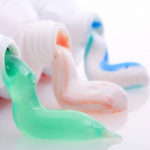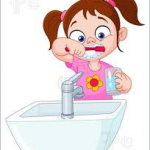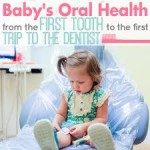 Finding the right Fort Worth dentist isn’t as easy as choosing the closest dental office to your home or work. Instead, we encourage you to take a few moments to read this post and learn more about what makes a dental practice right for you and your loved ones. When you find the best Fort Worth dentist to keep you smiling, you’ll be happy you spent a little extra time considering all of your options.
Finding the right Fort Worth dentist isn’t as easy as choosing the closest dental office to your home or work. Instead, we encourage you to take a few moments to read this post and learn more about what makes a dental practice right for you and your loved ones. When you find the best Fort Worth dentist to keep you smiling, you’ll be happy you spent a little extra time considering all of your options.
(more…)
How to Choose the Best Fort Worth Dentist
December 23, 2017
What Makes a Good Dentist?
November 13, 2017
 If you’re new to the Fort Worth Metroplex or looking for a new dental office to call home, you might feel overwhelmed by the number of choices available to you. Before you give up and pick the first dentist you drive past, take a few moments to ask some questions that will help you feel confident that you’ve chosen the right office for your smile and your family’s oral health. Consistently visiting a good dentist and comfortable dentistry practices reduces patients’ risk for oral health concerns and makes visiting the dentist a comfortable experience free from stress and pain.
If you’re new to the Fort Worth Metroplex or looking for a new dental office to call home, you might feel overwhelmed by the number of choices available to you. Before you give up and pick the first dentist you drive past, take a few moments to ask some questions that will help you feel confident that you’ve chosen the right office for your smile and your family’s oral health. Consistently visiting a good dentist and comfortable dentistry practices reduces patients’ risk for oral health concerns and makes visiting the dentist a comfortable experience free from stress and pain.
(more…)
Tips to Choose the Right Toothpaste for Your Family
October 16, 2014

With so many options in the dental health isle choosing toothpaste can be a little overwhelming. From baking soda, whitening, foaming, desensitizing, tarter control, anti-gingivitis, fluoride…the list can go on and on. No matter the brand always select a toothpaste with the American Dental Association (ADA) seal of approval. Dr. Tillman has a few tips for choosing the right toothpaste for you and your family’s needs.
- Anti-cavity: Almost all the options on the market contain fluoride. Fluoride is just as important as brushing in preventing decay and it actively strengthens tooth enamel.
- Anti-gingivitis: Do your gums suffer from redness and bleeding? You might have gingivitis, a mild form of gum disease. Anti-gingivitis toothpastes help reduce oral bacteria and can be very effective at stopping this gum condition at its source.
- Desensitizing: Ever take a sip of hot coffee or a cold beverage and feel a shooting pain? This type of toothpaste might help to give you some relief – it helps reduce pain by blocking the tooth’s pain signal to the nerve.
- Tartar-control: As its name indicates, tartar-control toothpaste helps prevent the buildup of tartar. While this product is helpful in slowing new buildup on teeth, a professional dental cleaning is the only way to remove existing tartar and the bacteria it harbors.
- Whitening: Containing polishing or chemical agents that remove surface stains, this toothpaste is able to help maintain the natural color of your teeth.
How to get your kids to brush their teeth and like it
October 2, 2014
Getting your kids to brush their teeth, yet alone like it, can be tricky. We have some tips that might help you to get your kids brushing and like it!!
your kids to brush their teeth, yet alone like it, can be tricky. We have some tips that might help you to get your kids brushing and like it!!
Dr. Tillman recommends that you choose a small, child-sized, soft-bristled toothbrush. Soaking the brush in warm water for a few minutes before brushing can soften the bristles even more. Use a pea sized amount of fluoride toothpaste.
Monkey See Monkey Do: Modeling good behavior is one of the best ways to get your kids excited about brushing their teeth instead of thinking it’s a chore. When you brush your teeth, be happy that you’re doing it. If Mom and Dad make it look like fun, the kids will want to do it too. Let them copy you. Buy them the same color toothbrush as you have, or try an electric one, which may be more entertaining for them. Let them try brushing your teeth and then you can brush theirs to make sure they’re actually clean.
Give them a good story: Talk about why we need to brush – how the sugar bugs make holes in our teeth if we don’t brush them away. Sometimes kids need a reason or a good story to get on board.
Make bubbles: Encourage them to create lots of bubbles – that means they’re brushing well. You could hold a bubble-making contest with your kids to see who can create the most bubbles.
Make sure to bring your kids in for their routine check ups and cleanings and our hygienists can help encourage the kids with good brushing habits!
Is Bottled Water Bad for My Teeth??
September 11, 2014
 Is Bottled Water Bad for My Teeth??
Is Bottled Water Bad for My Teeth??
Millions of Americans are embracing a healthy lifestyle and turning to bottled water as part of their diet. Bottled water is often marketed as being better for you, but it may be doing your teeth a disservice. Your bottled water could be missing some elements that promote oral health.
Fluoride (which many communities have added to their water supply), battles dental cavities by strengthening tooth enamel and re-mineralizing teeth damaged by acid. Unfortunately, the majority of bottled waters contain little or no fluoride.
If you’re deviating from your fluoridated community water supply, you may need to improvise to get your daily fluoride content. You can discuss your water sources, along with the appropriate level of fluoride you and your family should be getting, with Dr. Tillman. If you just can’t go back to the tap, Dr. Tillman may recommend a fluoride toothpaste or prescribe fluoride drops to help meet your needs.
The next time you buy a bottle of water or use a filtration system, think about your teeth, too. Fluoride helps prevent cavities, and since dental health is linked to overall health, you’ll want to take the right steps to keep your mouth in great shape. Talk to Dr. Tillman about the benefits of fluoride, and include dental care in your plans for a healthy lifestyle. After all, you’ve worked hard for that body –why not have a great set of teeth to go with it?
My Baby is Getting Teeth!!
August 29, 2014
 My Baby is Getting Teeth!!
My Baby is Getting Teeth!!
Knowing what to do when those first teeth start poking through is the first step. Caring for your little one’s teeth is critical to ensuring their overall health and instilling good habits. With that in mind, we thought we’d share some tips on pediatric oral hygiene.
Don’t wait to start cleaning. A clean damp washcloth does wonders for the gums. As soon as that first tooth pokes through, begin twice daily brushing.
Get that baby to the dentist! It should happen sooner than you might think. Dr. Tillman recommends that the first visit
occur by the age of 1 or 2 years old, but no later than 3. The first visit is really more of a meet and greet. Dr Tillman wants to make your child feel comfortable with someone else looking in their mouth. This will pave the road for future “happy visits”. They will get to sit in the BIG CHAIR with Mom or Dad and they will get to meet our hygienist and Dr. Tillman. We will do as much of an
examination as they will sit through. Ideally Dr. Tillman wants to take a look in their mouth, checking their gum tissue and counting teeth. As your child grows Dr. Tillman will do more and more at each visit until they are ready for their full blow cleaning every 6 months.
Using the correct items:
- Toothpaste – until age 3, you should only be using a small dab (grain of rice size) of fluoride toothpaste. From about ages 3 to 6 that can increase to the size of a pea. If your child is not able to effectively spit, have them tilt their mouth so the paste dribbles out into the sink so that they won’t swallow it.
- Soft bristled toothbrush –Dr. Tillman recommends using something very soft and age/size appropriate – children’s brushes are sold with recommended age ranges listed, so they should be easy to find.
- Floss – you should begin flossing for your little one as soon as they have two teeth that touch. Doing this as a family can
encourage good habits for both you and your baby. - Rinses – If you are uncertain that your little one can rinse and spit without swallowing, we suggest avoiding rinses. Typically around age 6/7 they will have this skill down. At this point Dr. Tillman recommends using a fluoride rinse twice a day under close adult supervision.
Make it FUN!! Usually singing 2 rounds of “Happy Birthday” is the approximate amount of time your little one should be brushing. KEEP THEM EXCITED!! Once your child is a little older, let them pick out their own toothbrush and toothpaste. This can motivate them to use the items that they have selected. Just be sure to double check their work and help them get to the areas they might have missed.
Dental Sealants
June 18, 2014
What are sealants?
Dental sealant is a thin, plastic coating painted on the chewing surfaces of teeth — usually the back teeth (the premolars and molars). The sealant quickly bonds into the depressions and grooves of the teeth, forming a protective shield over the enamel of each tooth.
Although thorough brushing and flossing can remove food particles and plaque from smooth surfaces of teeth, they cannot always get into all the nooks and crannies of the back teeth to remove the food and plaque. Sealants protect these vulnerable areas from tooth decay by “sealing out” plaque and food.
Who Should Get Sealants?
Because of the likelihood of developing decay in the depressions and grooves of the premolars and molars, children and teenagers are candidates for sealants. However, adults without decay or fillings in their molars can also benefit from sealants.
Typically, children should get sealants on their permanent molars and premolars as soon as these teeth come in. In this way, the sealants can protect the teeth through the cavity-prone years of ages 6 to 14.
In some cases, dental sealants may also be appropriate for baby teeth, such as when a child’s baby teeth have deep depressions and grooves. Because baby teeth play such an important role in holding the correct spacing for permanent teeth, it’s important to keep these teeth healthy so they are not lost too early.
How Are Sealants Applied?
Applying sealant is a simple and painless process. It takes only a few minutes for your dentist or hygienist to apply the sealant to seal each tooth. The application steps are as follows:
- First the teeth that are to be sealed are thoroughly cleaned.
- Each tooth is then dried, and cotton or another absorbent material is put around the tooth to keep it dry.
- An acid solution is put on the chewing surfaces of the teeth to roughen them up, which helps the sealant bond to the teeth.
- The teeth are then rinsed and dried.
- Sealant is then painted onto the tooth enamel, where it bonds directly to the tooth and hardens. Sometimes a special curing light is used to help the sealant harden.
How Long Do Sealants Last?
Sealants can protect teeth from decay for up to 10 years, but they need to be checked for chipping or wearing at regular dental check-ups. Your dentist can replace sealants as necessary.
Does Insurance Cover the Cost of Sealants?
Many insurance companies cover the cost of sealants. Check with our office so we can verify if your insurance will cover the cost of sealants.
